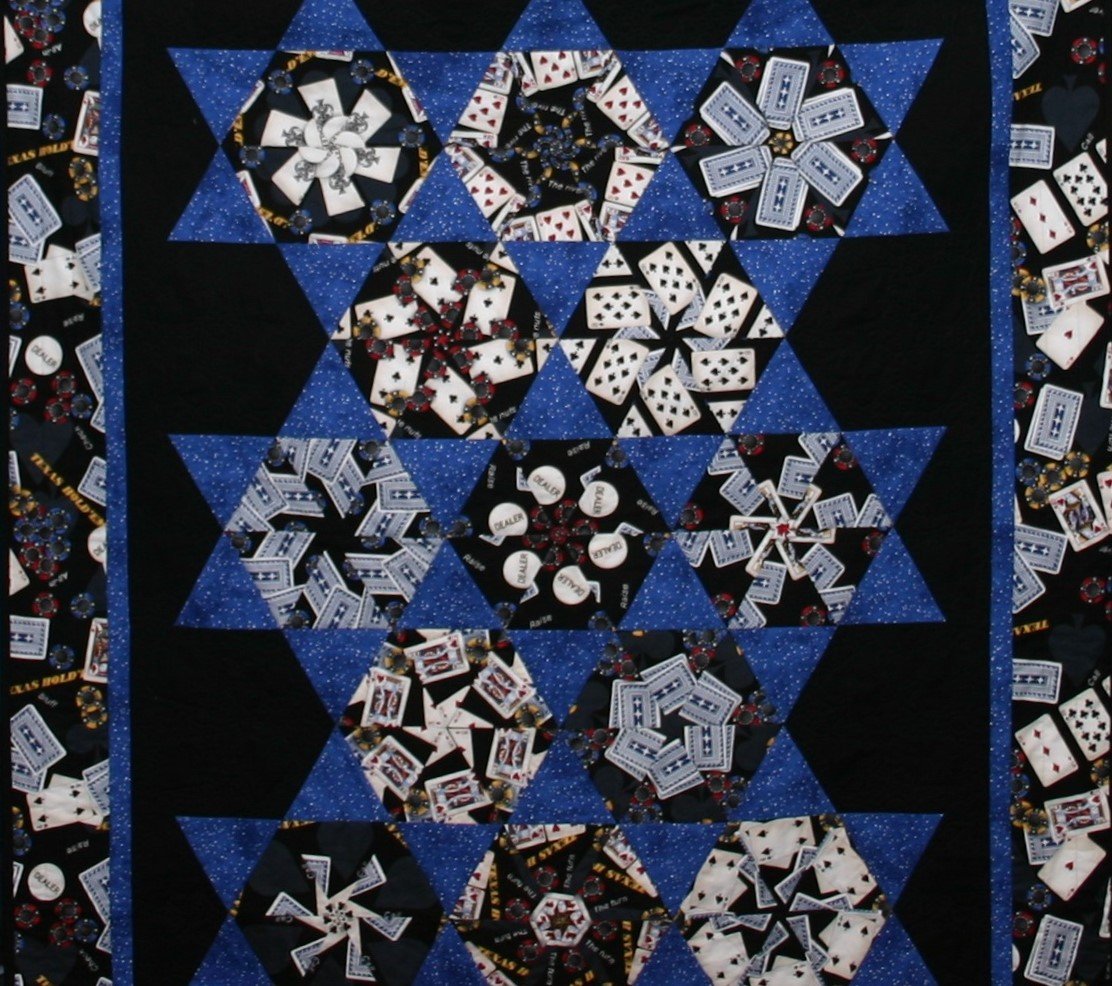Fussy Cutting For Blocks
Last time I demonstrated fussy cutting for English paper piecing. Well, I do know that not everyone is as enamoured with EPP as I am so I wanted to show the rest of you how to do it for regular quilt blocks. There are two ways to go about it. One, by using a ruler specifically designed for fussy cutting, or two, the cheap and cheerful way of using one of your regular rulers and some masking tape. As you know, everyone’s brain works differently, and one method may be much easier for you than another depending on your learning style.
First, the specialty ruler. The one I own is the Multi Size Fussy Cutter by Marti Michell which allows fussy cutting of five different sizes up to a 6” finished square, but there are others on the market that will do the exact same job, and some are able to fussy cut much larger squares as well. Just check with your local quilt store to see what they have to offer.
Notice that this ruler has five different sized squares…1”, 2”, 3”, 4” and 6”. The solid lines indicate the unfinished square size that includes 1/4” seam allowances, therefore the dashed lines indicate the sewing lines and the finished size of each square.
Each corner of the ruler is a different sized square shown by the numbers 1 through 4, each number representing the finished size of each square in inches. The 6” square is the entire size of the ruler with the circled number 6 indicating the centre of the fussy cut square.
To use this ruler place the size of square you’ve chosen for the motif to be cut on top of the fabric (I’ve chosen the 4” finished square) and cut along the right hand side and along the top (lefties, do the same on the left hand side). Turn the fabric around, reposition the line on the cut edge and cut the remaining two sides. I’ve shown masking tape positioned just outside of the lines that are used…this can be helpful when you’re just learning to use the ruler and gives a guideline, but it’s not necessary.
With the monster fabric I knew I wanted to highlight the monster messing around with the laundry basket. Notice that at the bottom of the block the laundry there was situated just inside the dotted line so none of that part of the design would be lopped off and in the seam allowance…I wasn’t worried about the laundry being thrown around above his head. Also, even though the monster itself is not centred in the square, make note that the monster’s hand on the right of the square is pretty much equidistant from the seam allowance as the red hat (?) is on the left. You have a lot of leeway when fussy cutting and are able to highlight the things that you find are important to your own design.
When using a ruler that you already own it’s easy to set it up for fussy cutting squares. Once again masking tape (or Glow-Line tape made specifically for rulers and is narrower) is very helpful. The sample shows a 6 1/2” Creative Grids ruler with the 4 1/2” square shown with masking tape around it. I also tore a small piece of masking tape off and positioned it at the 2 1/4” spot to indicate the centre of that square. Now all you have to do is cut along the right side and across the top, turn the fabric around, reposition the ruler with the 4 1/2” lines on the previously cut corner and cut the remaining 2 sides. Easy peasy!
Design your own patchwork blocks using fussy cutting. Prints geared to children are particularly great for fussy cutting…your child or grandchild will be thrilled to get a quilt featuring their favourite super hero, animal, sport or TV character. The options are endless. This easy Sawtooth Star block highlights Tula Pink’s All Ears fabric. Check out the post about half-square triangles and the posts about flying geese part 1 and flying geese part 2 to see how to make your own Sawtooth Star.
Of course, this is just a drop in the bucket for ways to incorporating fussy cutting into your quilts. Such patterns as Four Patch Posie and Stack’N’Whack and One Block Wonder are much different versions of fussy cutting (using triangles instead) by layering 4, 6 and 8 identical motifs one on top of the other before cutting…they take it to a whole other level. Technically they just use the same shape to get a kaleidoscope effect, but if you are able to position the same motif one on top of the other and do the fussy cutting it works by making the design “spin”. Check to see if your local quilt store offers these as classes…you will learn so much. (below are a couple of my own samples of these techniques)
This is one dynamic technique that you will be glad to have at your disposal for a future quilt for that special someone.
Stack’N’Whack
variation of One Block Wonder
variation of One Block Wonder









